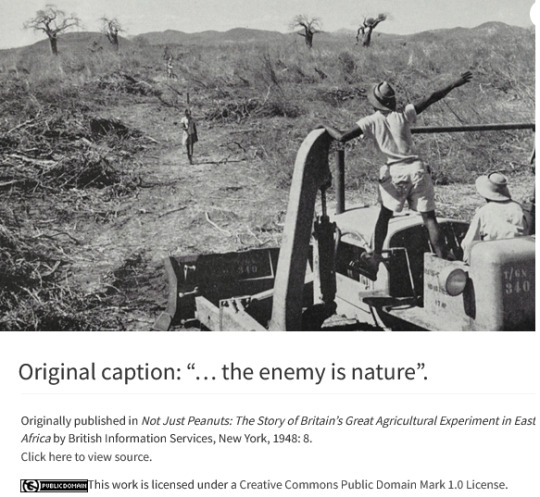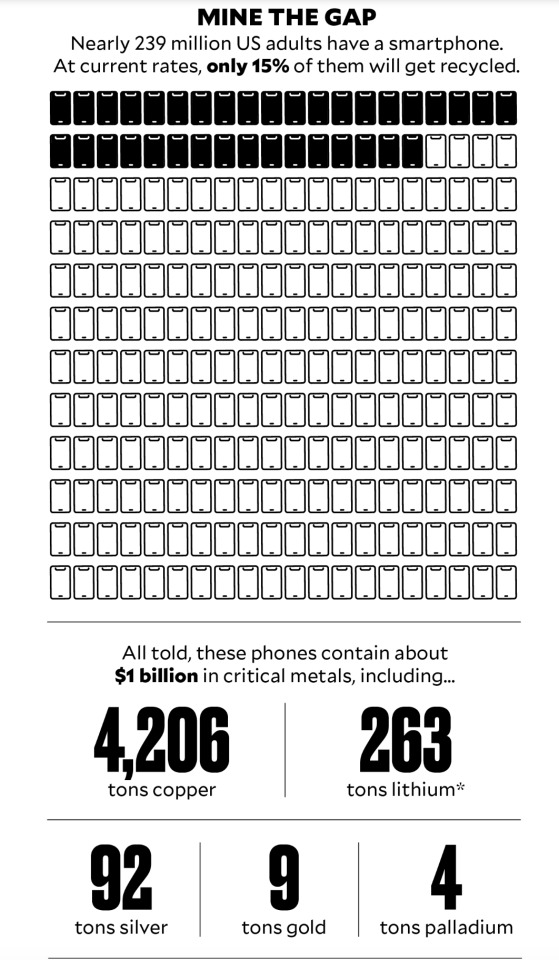#Hardware development solutions
Explore tagged Tumblr posts
Text
Hardware development solutions, Applications processing, Image Processing
i.MX 93 i.MX ARM Cortex-A55 2GB RAM 16GB QSPI Flash MPU Evaluation Board
0 notes
Text
Surely there's a modern wireless GameCube controller out there
#oooo i think i need to peruse reddit about this#i am NOT buying a 20 year old wavebird there has to be a better solution#my post#just let me plug in a wireless dongle into my GameCube#in similar news have we seen someone stuck an ssd into a GameCube#god i love you enthusiasts and weirdos for not letting retro hardware die#edit: just remembering the wireless madcatz controller we relegated to youngest sibling#and it's probably at my parents house#but it was half the size of the standard controller#and i have adult size hands now#the developments are developing
0 notes
Text
#end-to-end product development#embedded software solutions#AI product development company#AI-driven hardware development#Best Sourcing Specialists in India
0 notes
Text
In recent years, the realm of virtual reality (VR) has experienced a transformative evolution, establishing itself as a cornerstone of innovation across various industries. One of the trailblazers in this dynamic field is Simulanis, a VR development company based in India. With a focus on harnessing the power of immersive technology, Simulanis is not just creating virtual experiences; they are reshaping how businesses, education, and entertainment engage with audiences.
#VR Development India#Virtual Reality Solutions India#VR App Development India#Immersive VR Technology India#VR Game Development India#AR/VR Development Companies India#Virtual Reality Studios India#Custom VR Solutions India#Virtual Reality Content Creation India#VR Software Development India#VR Experience Design India#VR Simulation Development India#India VR Technology Providers#Virtual Reality for Businesses India#Enterprise VR Solutions India#VR Training Solutions India#Virtual Reality Development Companies India#Interactive VR Solutions India#VR for Education India#VR Hardware and Software Development India
1 note
·
View note
Text
#top hardware services#best software services#digital solution#tech digital development#coding web developments#digital services#seo optimization
0 notes
Text



In Paper Mario, the Dry Dry Ruins dungeon is laid out in an extremely curious manner internally. Every room is its own model so no two rooms are loaded into memory at once, but unlike every other area in the game, the rooms are not centered on the coordinate origin. Instead, every room is shifted and rotated from where it would be expected to be.
The solution is to load all the rooms into memory at once. This reveals that they form a cylinder, as seen in the images from various angles. This strongly suggests that at some point in development, it was intended for the rooms to all create a single large room, possibly to make use of the cylindrical structure in some unknown way.
While it would be impractical for the Nintendo 64 hardware to render all of this geometry at the same time, some games such as The Legend of Zelda: Ocarina of Time do use a similar system whereby a dungeon is all connected and part of the same internal room, but only a part of it (a single visual room) is rendered at any one time. However, this would require the team to program a different way to load rooms from what the rest of the game uses, solely for the purpose of this dungeon, and could have been dropped due to being too much work for a one-time gimmick.
Main Blog | Patreon | Twitter | Bluesky | Small Findings | Source: Peardian
446 notes
·
View notes
Note
Is AWAY using it's own program or is this just a voluntary list of guidelines for people using programs like DALL-E? How does AWAY address the environmental concerns of how the companies making those AI programs conduct themselves (energy consumption, exploiting impoverished areas for cheap electricity, destruction of the environment to rapidly build and get the components for data centers etc.)? Are members of AWAY encouraged to contact their gov representatives about IP theft by AI apps?
What is AWAY and how does it work?
AWAY does not "use its own program" in the software sense—rather, we're a diverse collective of ~1000 members that each have their own varying workflows and approaches to art. While some members do use AI as one tool among many, most of the people in the server are actually traditional artists who don't use AI at all, yet are still interested in ethical approaches to new technologies.
Our code of ethics is a set of voluntary guidelines that members agree to follow upon joining. These emphasize ethical AI approaches, (preferably open-source models that can run locally), respecting artists who oppose AI by not training styles on their art, and refusing to use AI to undercut other artists or work for corporations that similarly exploit creative labor.
Environmental Impact in Context
It's important to place environmental concerns about AI in the context of our broader extractive, industrialized society, where there are virtually no "clean" solutions:
The water usage figures for AI data centers (200-740 million liters annually) represent roughly 0.00013% of total U.S. water usage. This is a small fraction compared to industrial agriculture or manufacturing—for example, golf course irrigation alone in the U.S. consumes approximately 2.08 billion gallons of water per day, or about 7.87 trillion liters annually. This makes AI's water usage about 0.01% of just golf course irrigation.
Looking into individual usage, the average American consumes about 26.8 kg of beef annually, which takes around 1,608 megajoules (MJ) of energy to produce. Making 10 ChatGPT queries daily for an entire year (3,650 queries) consumes just 38.1 MJ—about 42 times less energy than eating beef. In fact, a single quarter-pound beef patty takes 651 times more energy to produce than a single AI query.
Overall, power usage specific to AI represents just 4% of total data center power consumption, which itself is a small fraction of global energy usage. Current annual energy usage for data centers is roughly 9-15 TWh globally—comparable to producing a relatively small number of vehicles.
The consumer environmentalism narrative around technology often ignores how imperial exploitation pushes environmental costs onto the Global South. The rare earth minerals needed for computing hardware, the cheap labor for manufacturing, and the toxic waste from electronics disposal disproportionately burden developing nations, while the benefits flow largely to wealthy countries.
While this pattern isn't unique to AI, it is fundamental to our global economic structure. The focus on individual consumer choices (like whether or not one should use AI, for art or otherwise,) distracts from the much larger systemic issues of imperialism, extractive capitalism, and global inequality that drive environmental degradation at a massive scale.
They are not going to stop building the data centers, and they weren't going to even if AI never got invented.
Creative Tools and Environmental Impact
In actuality, all creative practices have some sort of environmental impact in an industrialized society:
Digital art software (such as Photoshop, Blender, etc) generally uses 60-300 watts per hour depending on your computer's specifications. This is typically more energy than dozens, if not hundreds, of AI image generations (maybe even thousands if you are using a particularly low-quality one).
Traditional art supplies rely on similar if not worse scales of resource extraction, chemical processing, and global supply chains, all of which come with their own environmental impact.
Paint production requires roughly thirteen gallons of water to manufacture one gallon of paint.
Many oil paints contain toxic heavy metals and solvents, which have the potential to contaminate ground water.
Synthetic brushes are made from petroleum-based plastics that take centuries to decompose.
That being said, the point of this section isn't to deflect criticism of AI by criticizing other art forms. Rather, it's important to recognize that we live in a society where virtually all artistic avenues have environmental costs. Focusing exclusively on the newest technologies while ignoring the environmental costs of pre-existing tools and practices doesn't help to solve any of the issues with our current or future waste.
The largest environmental problems come not from individual creative choices, but rather from industrial-scale systems, such as:
Industrial manufacturing (responsible for roughly 22% of global emissions)
Industrial agriculture (responsible for roughly 24% of global emissions)
Transportation and logistics networks (responsible for roughly 14% of global emissions)
Making changes on an individual scale, while meaningful on a personal level, can't address systemic issues without broader policy changes and overall restructuring of global economic systems.
Intellectual Property Considerations
AWAY doesn't encourage members to contact government representatives about "IP theft" for multiple reasons:
We acknowledge that copyright law overwhelmingly serves corporate interests rather than individual creators
Creating new "learning rights" or "style rights" would further empower large corporations while harming individual artists and fan creators
Many AWAY members live outside the United States, many of which having been directly damaged by the US, and thus understand that intellectual property regimes are often tools of imperial control that benefit wealthy nations
Instead, we emphasize respect for artists who are protective of their work and style. Our guidelines explicitly prohibit imitating the style of artists who have voiced their distaste for AI, working on an opt-in model that encourages traditional artists to give and subsequently revoke permissions if they see fit. This approach is about respect, not legal enforcement. We are not a pro-copyright group.
In Conclusion
AWAY aims to cultivate thoughtful, ethical engagement with new technologies, while also holding respect for creative communities outside of itself. As a collective, we recognize that real environmental solutions require addressing concepts such as imperial exploitation, extractive capitalism, and corporate power—not just focusing on individual consumer choices, which do little to change the current state of the world we live in.
When discussing environmental impacts, it's important to keep perspective on a relative scale, and to avoid ignoring major issues in favor of smaller ones. We promote balanced discussions based in concrete fact, with the belief that they can lead to meaningful solutions, rather than misplaced outrage that ultimately serves to maintain the status quo.
If this resonates with you, please feel free to join our discord. :)
Works Cited:
USGS Water Use Data: https://www.usgs.gov/mission-areas/water-resources/science/water-use-united-states
Golf Course Superintendents Association of America water usage report: https://www.gcsaa.org/resources/research/golf-course-environmental-profile
Equinix data center water sustainability report: https://www.equinix.com/resources/infopapers/corporate-sustainability-report
Environmental Working Group's Meat Eater's Guide (beef energy calculations): https://www.ewg.org/meateatersguide/
Hugging Face AI energy consumption study: https://huggingface.co/blog/carbon-footprint
International Energy Agency report on data centers: https://www.iea.org/reports/data-centres-and-data-transmission-networks
Goldman Sachs "Generational Growth" report on AI power demand: https://www.goldmansachs.com/intelligence/pages/gs-research/generational-growth-ai-data-centers-and-the-coming-us-power-surge/report.pdf
Artists Network's guide to eco-friendly art practices: https://www.artistsnetwork.com/art-business/how-to-be-an-eco-friendly-artist/
The Earth Chronicles' analysis of art materials: https://earthchronicles.org/artists-ironically-paint-nature-with-harmful-materials/
Natural Earth Paint's environmental impact report: https://naturalearthpaint.com/pages/environmental-impact
Our World in Data's global emissions by sector: https://ourworldindata.org/emissions-by-sector
"The High Cost of High Tech" report on electronics manufacturing: https://goodelectronics.org/the-high-cost-of-high-tech/
"Unearthing the Dirty Secrets of the Clean Energy Transition" (on rare earth mineral mining): https://www.theguardian.com/environment/2023/apr/18/clean-energy-dirty-mining-indigenous-communities-climate-crisis
Electronic Frontier Foundation's position paper on AI and copyright: https://www.eff.org/wp/ai-and-copyright
Creative Commons research on enabling better sharing: https://creativecommons.org/2023/04/24/ai-and-creativity/
217 notes
·
View notes
Text
GenAI and writing in its shadow
I see a lot of creative writers express anxiety or even despair because of how good GenAI or LLMs (Large Language Models) seem to be at writing.
What I want to say is, please don't worry.
Having both worked in software development and been writing for a while, I'd like to happily say that GenAI is ✨garbage✨ at writing good stories because of two big reasons:
They lose the plot too easily and can't do callbacks or non-linear writing, because there is a hard upper limit to what an LLM can 'remember'. Even when presented with something like a plan that they have to follow, they don't necessarily connect each step of the plan to each other; they'll do each calculation in isolation, finish with it, then move on to the next. Because narratives, especially when you have more than one character, become these tangled webs of different 'plans' happening simultaneously, the LLM will 🎶 itself trying to remember and instead begin to 'improvise' solutions, much of which will deviate wildly from the plan and the narrative itself.
Also, did you notice how I used the words calculation and solutions? LLMs understand words and meaning as numbers. The next word in a sentence is math to them: they use statistics to guess which word would probably follow the word before it and still be relevant. This doesn't work for narratives because there's these wonderful things called ✨nuance, subtlety, emotional resonance, and subtext✨, and none of that is quantifiable. You can't put a number value on the 'why' of a character shrugging, or heck, not saying anything—that is literally 0 to an LLM, and thus impossible for it to calculate.
Both of these issues aren't just math or coding problems. The first requires absurd (and insanely costly) leaps in computing power and hardware. The second requires building an LLM on something that... isn't a computer.
Write your hearts out. Don't be afraid. The world needs us to stay creative, because while science and technology give us the ways and means to live our lives, creativity and emotion give us the reason to be alive. 💖
#writing#writeblr#writers on tumblr#creative writing#on writing#writers#writers and poets#writing community#creativity#writer humor#writer things
133 notes
·
View notes
Text
Crashed again last night and here's confirmation that it's a RAM issue


It's trying to address nearly 5 GIGS of RAM when I only have about 3.
Does anyone know of a way to force a memory limit on Firefox for Android?
All of the methods I've seen are only for desktop (mobile doesn't have about:config) or people saying that you should leave the memory management to the OS (clearly not helpful) or people complaining about slowness or storage space or browser crashes (irrelevant, clogging up search results) or confusing ram with internal storage (who even decided to call internal storage memory in the first place??? As if RAM didn't already mean random access MEMORY).
I'm getting sick of Firefox suddenly using up all of the RAM and causing my entire phone to hard crash and reboot 😭 (not just a tab or browser crash).
My phone's fairly old (I've gotta upgrade soon due to the 3g shutoff and lack of VOLTE support) but that's still a while away and it's only Firefox that's causing this to happen, everything else runs fine (plus I'd still like to use this thing even when I upgrade!). Can't mess about in root until I upgrade because this era of phone punishes you if you do (and I don't want to break something in there and be out of a phone for several months! Again!)
#I know that storage can be used as weird ram but I don't have much of that either. Android alone takes up a third of it#The worst part is that new lower end phones also have about 3 gigs of ram >:(. Sometimes even less!!!#You'd think that software developers would consider that not everyone can have the latest and greatest hardware/OS#Sorry for the salt but this is the icing on the cake when the telcos are forcing obsolescence as well#And a lot of older flagships that fit my needs also lack VOLTE support. All newer phones than that are too tall for me to use!!!#AND it's a guess at if telcos will support an imported phone if I go that route!#This is all caused by the fact that they want to do more 5g; the plan I'm on doesn't even have 5g AND it'll have worse coverage!!!#I'm 👌 this close to sending a strongly worded email to optus. Their solution to telling people if their device is affected is a TEXT#I'm absolutely certain that my device is affected and I've yet to receive it. I bet they'll send it out the day before they shut it off#So they can rake in the cash from selling a bunch of phones and plan upgrades to people who have no other choice#Since VOLTE will only work if your device's firmware supports it AND the telcos support your device#Without volte I can't make any calls. THIS INCLUDES EMERGENCY SERVICES.#I completely went off topic but nonetheless the people who say ''oh just upgrade your phone lol'' can stub their little toe
19 notes
·
View notes
Text
I find kernel level anti-cheats and generally client-side anticheats like BattleEye, EasyAntiCheat, and Vanguard really stupid, because they really aren't stopping cheaters, all they're doing is discouraging them while sacrificing performance, user privacy, Linux support, and generally risking accidentally banning casual user.
I started developing my own anti-cheat for a game and it hit me, you should never have any anti-cheat on the client. All anti-cheats should be server-side, because to this day players are still figuring out ways to bypass these anti-cheats, like using hardware-level exploits which are physically impossible to detect unless they start serving anti-cheats as AI-powered robots that are physically in your room looking at you while you game.
Think about it.. Wall hacks let you see other players through walls, easy solution right? Just don't tell the client where the other players are, do server-side calculations for occlusion, you already have a system for it to do it client-side since it saves performance not to render players that aren't on the screen. But nope, because it would slightly increase server costs, even if it makes cheating impossible to perform.
The number one rule in multiplayer is "NEVER TRUST THE CLIENT UNDER ANY CIRCUMSTANCE", and these huge game dev corporations are consistently not following it, then complain about having cheaters while going "Oh, it must be the Linux users!!! Not our flawed approach at anti-cheat!!!"
56 notes
·
View notes
Text
The link between warfare and technological innovation has been well documented [...]. World War II was a particularly intense crucible of technological change, and the repurposing of military technologies and industries in the forging of a new post-war consumer [economy] is crucial [...]. Processes of technological bricolage turned the machines of war onto the natural world as global powers competed to cement their economic and imperial hegemony. In Great Britain’s post-war “groundnut scheme” in its East African territories (1946-51), this collision of nature, military hardware, and technical expertise was part of efforts to both produce more fats for the British diet and to demonstrate to the world (most importantly the United States) that, through a newly energized science-led developmentalism, British colonialism still had a “progressive” role to play in the postwar world.

The aim was to produce millions of tons of peanuts across Tanganyika using the latest methods of advanced scientific agriculture. The environmental conditions in the north, where the scheme was to begin, were known to be especially trying, not least the dry climate [...]. But faith in the power of mechanized agriculture was such that any natural limits were thought to be readily surmountable.
The groundnut scheme was to be, as its Director put it in an interview with the Tanganyika Standard, a “war” with nature, and an “economic Battle of Alamein” waged over some three million acres by an army of colonial technicians - many recruited from military ranks - and local laborers, for many of whom the scheme represented their first entry into the wage labor market.
But it wasn’t just the rhetoric of war that was repurposed.
Lancaster bombers were kitted out to survey and discover “new country” in East Africa for agricultural development. [...] [T]ractors and bulldozers from military surplus stores in Egypt proved unable to tackle the hard ground and tough vegetation, so the planners turned to a novel solution: repurposing surplus Sherman M4A2 tanks. The Vickers-Armstrong factory in Newcastle-Upon-Tyne set about rearranging key elements of the tanks’ construction [...]. The tractors, christened “Shervicks” for their hybrid origins, were [...] thought to be particularly suited to large-scale earth-moving and to the kind of heavy duty “bush clearing” that was required in Tanganyika.


Officials sought to dismiss concerns that large-scale bush clearing would have wider environmental consequences, using the well-worn colonial trope that any observed changes in local climate or erosion patterns were due to the “primitive” agricultural practices of the locals, not to the earth-moving practices of the colonists. [...] As the plants continued to wilt in the sun, [...] [t]he stakes were high. As [J.R.] of the Colonial Development Corporation put it in a letter: “Our standing as an Imperial power in Africa is to a substantial extent bound up with the future of this scheme. To abandon it would be a humiliating blow to our prestige everywhere.” The only option left was to try and bend the weather itself to the scheme’s will, by seeding the clouds for rain. [...] “Balloon bombs” (photographic film canisters tethered to weather balloons) and a repurposed Royal Navy flare gun were used to target individual clouds [...]. The scheme itself has survived as a cautionary tale of governmental hubris, but it is instructive too as a case study of how technologies of war have been turned against other foes.
---
All text above by: Martin Mahony. “The Enemy is Nature: Military Machines and Technological Bricolage in Britain’s ‘Great Agricultural Experiment.’“ Environment and Society Portal, Arcadia (Spring 2021), no. 11. Rachel Carson Center for Environment and Society. doi:10.5282/rcc/9191. [Bold emphasis and some paragraph breaks/contractions added by me. Images and their captions are shown unaltered as they originally appear in Mahony's article. Public Domain Mark 1.0 License for images: creativecommons dot org/publicdomain/mark/1.0/]
195 notes
·
View notes
Text
Virtual reality (VR) technology is transforming industries globally, and India is no exception. As a pioneer in VR development, Simulanis has emerged as a key player in shaping the future of industrial training. As a leading VR company in India, Simulanis is at the forefront of integrating immersive VR solutions into industrial processes, particularly in VR for industrial training, EHS training in VR, and health safety environment training in VR.
The world is moving rapidly toward more immersive technologies, and virtual reality (VR) is one of the most influential tools for enhancing how industries operate. In India, VR development companies like Simulanis are driving the adoption of this cutting-edge technology in areas like training, safety, and simulation. This blog will explore how Simulanis, as a VR solutions company, is revolutionizing industrial training, highlighting key aspects such as VR simulation company, Virtual Reality in India, and Virtual Reality Training in India.
#vr company in india#vr developement company in india#vr solutions company#vr for industrial training#VR in India#vr simulation company#Virtual Reality Company in India#Virtual Reality Company#Virtual Reality India#Virtual Reality Companies in Delhi#Virtual Reality Training in India#Virtual Reality Company in Mumbai#Industrial Training in VR#EHS Training in VR#Health Safety Environment Training in VR#VR Development#Immersive Experiences#Metaverse Technology#VR Hardware#360-Degree Video#Virtual Reality Solutions#XR (Extended Reality)#Augmented Reality (AR)#Mixed Reality (MR)#VR Gaming#Virtual Reality Training#VR Simulation#Enterprise VR Solutions#VR Content Creation#Real-Time VR Rendering
0 notes
Text
Oh the irony, it burns. Despite the red hot rhetoric of right wing politicians, some US states are neck deep in the renewable energy revolution. A case in point is the deep red state of Texas, which has been growing its solar manufacturing profile even as state lawmakers try to obstruct the energy transition.
More Solar Manufacturing For Texas
The fresh burst of activity in Texas’s solar manufacturing profile is significant because the state only had 14 or so manufacturers to its credit as recently as 2023, mostly clustered in the racking business and other associated hardware. Mission Solar held the title of Texas’s lone solar module maker until that year, when the leading Indian firm Waaree Energies announced that its new 5-gigawatt solar shop will be located in Brookshire, Texas.
“The creation of a U.S.-owned and operated company that can provide a turnkey solar technology solution is expected to solve a bottleneck for developers, create up to 1,800 direct jobs, satisfy local content requirements for U.S. solar projects, and competitively differentiate FREYR,” the Norwegian company explained.
Texas continues to top all other states for installed wind capacity, a position it has held since early 2000’s. Texas is also challenging California for installed solar capacity now.
13 notes
·
View notes
Text
USAID contract (2024)
Recipient: International Business Machines Corporation
Amount: $29,750,000
Purpose: The new cyber security activity will support host government and operators to develop and implement policies, procedures, and hardware/software solutions, as well as workforce development, aimed at improving prevention, protection, preparedness, resp...
Country: Albania
21 notes
·
View notes
Text
I'm late to the RvB OC week party, because of a project for my design course but. I'm just going to post everything late! So:
Day One: Introduction
I have a lot of OCs, 13 to be specific. They're the members of the Project Freelancer Canadian Division (aka CanDiv), a program advertised as an opportunity to allow uniquely talented neurodivergent people to contribute to the war effort against the Covenant. However, the true purpose of this program was to study the impact of AI on a variety of neurodivergences in a more in-depth manner, as well as the impacts of these conditions on performance as an agent and on their capabilities as a team. CanDiv agents were kept separate from the American Division, with the AmDiv agents even being fed rumours of "insanity, instability, and violence" to ensure they avoided CanDiv agents.
My main focus has always been on Agent Alberta and Agent Nova Scotia, who were the first recruits to the program.
Agent Alberta (she/they), aka Ali, is Alison Henley, a recon specialist with ADHD-CT, the impulsive nature of which means she rarely hesitates in battle and is quick to improvise solutions to problems on the fly. They favour a DMR or a sniper rifle, and their armour is equipped with a hologram projection module.


Agent Nova Scotia (she/her), aka Nova, is Kris Henley, a stealth specialist with PTSD, which provides the hypervigiliance that ensures she's constantly aware of her surroundings and planning for anything and everything to go wrong. She favours dual SMGs or a battle rifle, and her armour is equipped with a speed enhancement module.


Picrew source: x
Originally, these two were not even part of the military- however, they were civilian researchers at a U.N.S.C. research university on the planet of Camber. Cousins Alison and Kris Henley were studying biomedical engineering and xenobotany, respectively- Ali involved in research of neural interfaces, and Kris involved in biosynthetic materials development. They attracted the attention of Project Freelancer after the glassing of Camber, the story of which can be read at the following link:
After their recruitment, Alberta and Nova Scotia spent some time in training with some of the lower-ranked, late recruitment members of the AmDiv. However, the majority of their time was actually spent doing research for the project- developing the specialized neural interfaces and materials that would be used in the adaptation of MJOLNIR armour for non-augmented bodies. They ended up becoming very involved in the testing of these suits of armour, and ended up with a lot of expertise in using and modifying the systems. After the successful launch of this project, codenamed Ukonvasara, the rest of the CanDiv was recruited, and they were sequestered completely from the AmDiv.
After a great deal time spent serving in the Project as full-fledged agents, the CanDiv's AI implantations began. Unlike the AmDiv, however, the CanDiv implantations were done in short but gradually increasing stints, using the AI Eta and Iota. These fragments proved to be extremely hard on many of the agents, who were nevertheless forced to take them on for longer and longer stints. When the agents protested, they were shut down and subjected to less and less support on missions. Eventually, one of the Canadian agents discovered that Ali and Nova were slated to be implanted permanently, and the team agreed more serious action needed to be taken in protest. They staged an attack, wherein Ali and Nova pretended to be loyal to the project, and instead faked the deaths of the two agents by placing tracking hardware spoofing their armour's signal into a pelican, ejecting it from the ship, and causing it to self-destruct. Then in the chaos of the team fighting the rest of the project's security forces, and some members of AmDiv, Ali and Kris slipped themselves into the rank and file of some Sim Troopers who happened to be on board, and escaped.
#not video games#late nights with ali#ali watches rvb#rvbocweek2025#red vs blue#rvb#ali writes#side note: ali and nova got their start as my cousin and I's self-inserts. they've taken on a story of their own at this point but. yeah.#OC: alberta#OC: nova
13 notes
·
View notes
Text

Excerpt from this story from Mother Jones:
The world generates more than 68 million tons of e-waste every year, according to the UN, enough to fill a convoy of trucks stretching right around the equator. By 2030, the total is projected to reach 75 million tons.
Only 22 percent of that e-waste is collected and recycled, the UN estimates. The rest is dumped, burned, or forgotten—particularly in rich countries, where most people have no convenient way to get rid of their old Samsung Galaxy phones, Xbox controllers, and myriad other gadgets. Indeed, every year, humanity is wasting more than $60 billion worth of so-called critical metals—the ones we need not only for electronics, but also for the hardware of renewable energy, from electric vehicle (EV) batteries to wind turbines.
Millions of Americans, like me, spend their workdays on pursuits that lack any physical manifestation beyond the occasional hard-copy book or memo or report. It’s easy to forget that all these livelihoods rely on machines. And that those machines rely on metals torn from the Earth.
Consider your smartphone. Depending on the model, it can contain up to two-thirds of the elements in the periodic table, including dozens of metals. Some are familiar, like the gold and tin in its circuitry and the nickel in its microphone. Others less so: Tiny flecks of indium make the screen sensitive to the touch of a finger. Europium enhances the colors. Neodymium, dysprosium, and terbium are used to build the tiny mechanism that makes your phone vibrate.
Your phone’s battery contains cobalt, lithium, and nickel. Ditto the ones that power your rechargeable drill, Roomba, and electric toothbrush—not to mention our latest modes of transportation, ranging from plug-in scooters and e-bikes to EVs. A Tesla Model S has as much lithium as up to 10,000 smartphones.
The millions of electric cars and trucks hitting the planet’s roads every year don’t spew pollutants directly, but they’ve got a monstrous appetite for electricity, nearly two-thirds of which still comes from burning fossil fuels—about one-third from coal. Harvesting more of our energy from sunlight and wind, as crucial as that is, entails its own Faustian bargain. Capturing, transmitting, storing, and using that cleaner power requires vast numbers of new machines: wind turbines, solar panels, switching stations, power lines, and batteries large and small.
You see where this is going. Our clean energy future, this global drive to save humanity from the ever-worsening ravages of global warming, depends on critical metals. And we’ll be needing more.
In all of human history, we have extracted some 700 million tons of copper from the Earth. To meet our clean energy goals, we’ll have to mine as much again in 20-odd years. By 2050, the International Energy Agency estimates, global demand for cobalt for EVs alone will soar to five times what it was in 2022. Demand for nickel will be 10 times higher. Lithium, 15 times. “The prospect of a rapid increase in demand for critical minerals—well above anything seen previously in most cases—raises huge questions about the availability and reliability of supply,” the agency warns.
Metals are natural products, but the Earth does not relinquish them willingly. Mining conglomerates rip up forests and grasslands and deserts, blasting apart the underlying rock and soil and hauling out the remains. The ore is processed, smelted, and refined using gargantuan, energy-guzzling, pollution-spewing machines and oceans of chemicals. “Mining done wrong can leave centuries of harm,” says Aimee Boulanger, head of the Initiative for Responsible Mining Assurance, which works with companies to develop more sustainable extraction practices.
The harm is staggering. Metal mining is America’s leading toxic polluter. It has sullied the watersheds of almost half of the rivers in the American West. Chemical leaks and mining runoff foul air and water. The mines also generate mountains of hazardous waste, stored behind dams that have a terrifying tendency to fail. Torrents of poisonous sludge pouring through collapsed tailings dams have contaminated waterways in Brazil, Canada, and elsewhere and killed hundreds of people—in addition to the hundreds, possibly thousands, of miners who die in workplace accidents each year.
To get what they’re after, mining companies devour natural resources on an epic scale. They dig up some 250 tons of ore and waste rock to get just 1 ton of nickel. For copper, the ratio is double that. Just to obtain the metals inside your 4.5-ounce iPhone, 75 pounds of ore had to be pulled up, crushed, and smelted, releasing up to 100 pounds of carbon dioxide. Mining firms also suck up massive quantities of water and deploy fleets of drill rigs, trucks, diggers, and other heavy machinery that collectively belch out up to 7 percent of the world’s greenhouse gas emissions.
Metal recycling is a completely different proposition from recycling the paper and glass we toss into our home bins for pickup. It turns out that retrieving valuable raw materials sustainably from electronic products—toasters, iPhones, power cables—is a fiendishly complex endeavor, requiring many steps carried out in many places. Manufacturing those products required a multistep international supply chain. Recycling them requires a reverse supply chain almost as complicated.
Part of the problem is that our devices typically contain only a small amount of any given metal. In developing countries, though, there are lots of people willing to put in the time and effort required to recover that little bit of value—an estimated tens of thousands of e-waste scavengers in Nigeria alone. Some go door to door with pushcarts, offering to take or even buy unwanted electronics. Others, like Anwar, work the secondhand markets, buying bits of broken gear from small businesses or rescuing them from the trash. Many scavengers earn less than the international poverty wage of about $2.15 per day.
15 notes
·
View notes